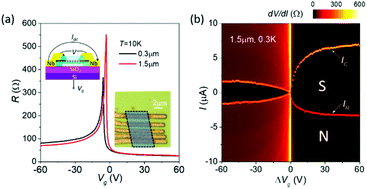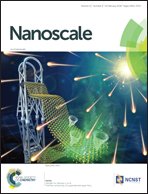Supercurrent and multiple Andreev reflections in micrometer-long ballistic graphene Josephson junctions†
Abstract
Ballistic Josephson junctions are predicted to support a number of exotic physics processess, providing an ideal system to inject the supercurrent in the quantum Hall regime. Herein, we demonstrate electrical transport measurements on ballistic superconductor–graphene–superconductor junctions by contacting graphene to niobium with a junction length up to 1.5 μm. Hexagonal boron nitride encapsulation and one-dimensional edge contacts guarantee high-quality graphene Josephson junctions with a mean free path of several micrometers and record-low contact resistance. Transports in normal states including the observation of Fabry–Pérot oscillations and Sharvin resistance conclusively witness the ballistic propagation in the junctions. The critical current density JC is over one order of magnitude larger than that of the previously reported junctions. Away from the charge neutrality point, the ICRN product (IC is the critical current and RN the normal state resistance of junction) is nearly a constant, independent of carrier density n, which agrees well with the theory for ballistic Josephson junctions. Multiple Andreev reflections up to the third order are observed for the first time by measuring the differential resistance in the micrometer-long ballistic graphene Josephson junctions.



 Please wait while we load your content...
Please wait while we load your content...